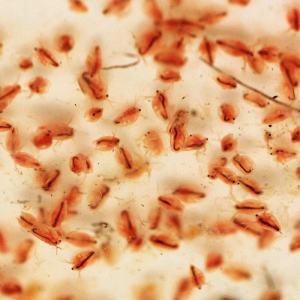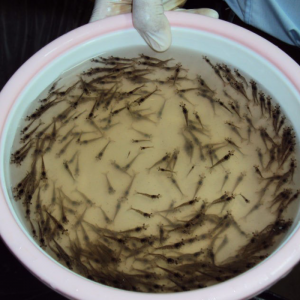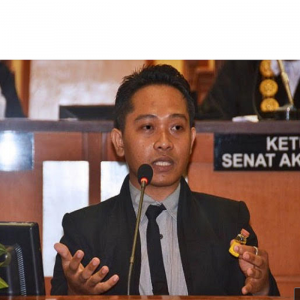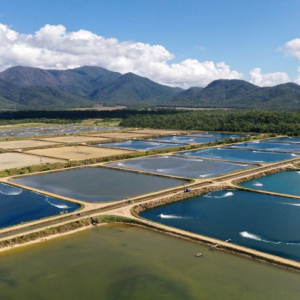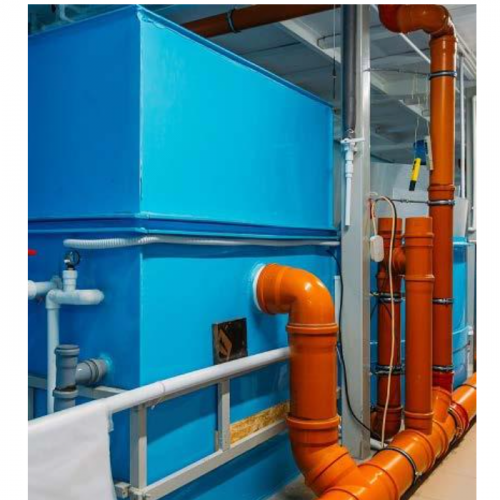
Benefits of Recirculating Aquaculture Systems
| Fri, 22 Jan 2021 - 11:25
Aquaponics provides a symbiotic relationship between plants and fish. One of the most efficient systems to use is a recirculating aquaculture system. This system works by using the water already in the system, purifying it, and reusing it continuously. The waste products produced, such as carbon dioxide, are removed or converted into non-toxic products and returned to the fish tanks. There are numerous benefits to using a recirculating aquaculture system.
Recirculating Aquaculture Systems (RAS) are the best option for locations close to or in cities with access to electricity. In order to farm tropical fish in moderate or cold climates, it is necessary to use RAS technology. One significant advantage has to do with the spread of diseases.
The lessened water use minimizes the likelihood that fish get diseases since pathogens from the outside are lowered. Water used in traditional farming is usually taken from the sea, a river, or a lake, which increases the risk of disease.
Also Read: A successful Case of Split Pond Recirculation Aquaculture System (SP-RAS) for Snakehead Fish Farming in Andhra Pradesh of India
Energy and water requirements are limited to a minimum when recirculating cultured water. Limited water use benefits production inside a fish farm. Traditional fish farming is dependent on external conditions like temperature and oxygen levels. These factors are limited in recirculating systems.

Another advantage of the RAS system is related to water and its quality control. Since dissolved oxygen levels are maintained at optimal levels, fish can have reduced stress, less food waste, and higher growth.
Recirculating aquaculture systems have certain advantages compared to other production systems.
A few additional benefits of recirculating aquaculture systems are:
- Fully controlled environment for the fish
- Low water use
- Efficient energy use
- Efficient land use
- Optimal feeding strategy
- Easy grading and harvesting of fish
- Full disease control
- Year-round production
- These are more environmentally compatible systems
- Systems can be expanded
Disadvantages
The main disadvantage of this system is that it is more costly to start up and have higher operating costs.
A high initial investment is needed for RAS technology as this technology requires a new production plant.
RAS technology also has high energy requirements. In order to operate RAS, highly-trained staff is needed, which can also mean more time and money spent away from farming.
Also read: Surge of Off-flavor Solutions for RAS Continues
RAS also needs a constant power supply. If there is a power outage, backup electricity is necessary.
The installation process is quite complex and requires a high degree of safety. This is an advanced production system consisting of numerous units and subsystems.
Conclusion
Recirculating aquaculture systems are efficient systems to use when dealing with aquaponics.
A few benefits include efficient energy use and disease control. RAS technology is useful when it comes to predicting output and gaining a competitive edge.
There are a few disadvantages to using the recirculating aquaculture system. These disadvantages include high startup costs and complex machinery. Despite this, RAS is an effective system to use in regard to efficient fish farming.
Baca juga: Optimisation of Feeding Strategies at A Fish Farm Through Mathematical Modelling
Reef Industries’ products and solutions
Aquaculture liners require a special material to offer the balance of properties necessary to meet those needs best.
Reef Industries would like to introduce Permalon®, a nontoxic polyethylene membrane ideal for lining ponds, lagoons, tanks, raceways, or other facilities where water management is an investment.
This alloyed aquaculture pond liner is engineered to resist punctures and tears to minimize water loss and land deterioration.
Reef Industries’ liners are available in heavy-duty, internally reinforced constructions and are available in 20 mils and 30 mils thicknesses constructed to suit an array of environments.
Permalon® liner materials are factory-fabricated up to an acre or more in size, minimizing the need for an expensive installation crew.
Baca juga: Fish Back On The Menu with Oxair’s Yield Boosting Technology
However, if you are in need of a custom-fabricated liner, Reef Industries’ capabilities also include three-dimensional shapes for box and container liners, raceway liners, and waterproofing/rehabilitating all manner of structural containers.
In addition to aquaculture liners, Reef Industries offers greenhouse covers. Griffolyn® greenhouse coverings have been performance engineered to be highly resistant to tears and punctures with an exceptional ability to retain strength and flexibility in the most extreme environments.
Due to their long-life expectancy, Griffolyn® materials provide significant long-term cost savings offering unmatched life expectancy in almost any environment.
Griffolyn® covers are manufactured using a UV stabilizing additive to protect them from UV degradation and help them retain their original properties.
The product’s high-strength reinforced construction helps safeguard against tears often associated with installation. Available for 80%, 20%, and 0% light transmission, Griffolyn® can be custom fabricated to meet your exact requirements.
Source: Aquaculture Mag













